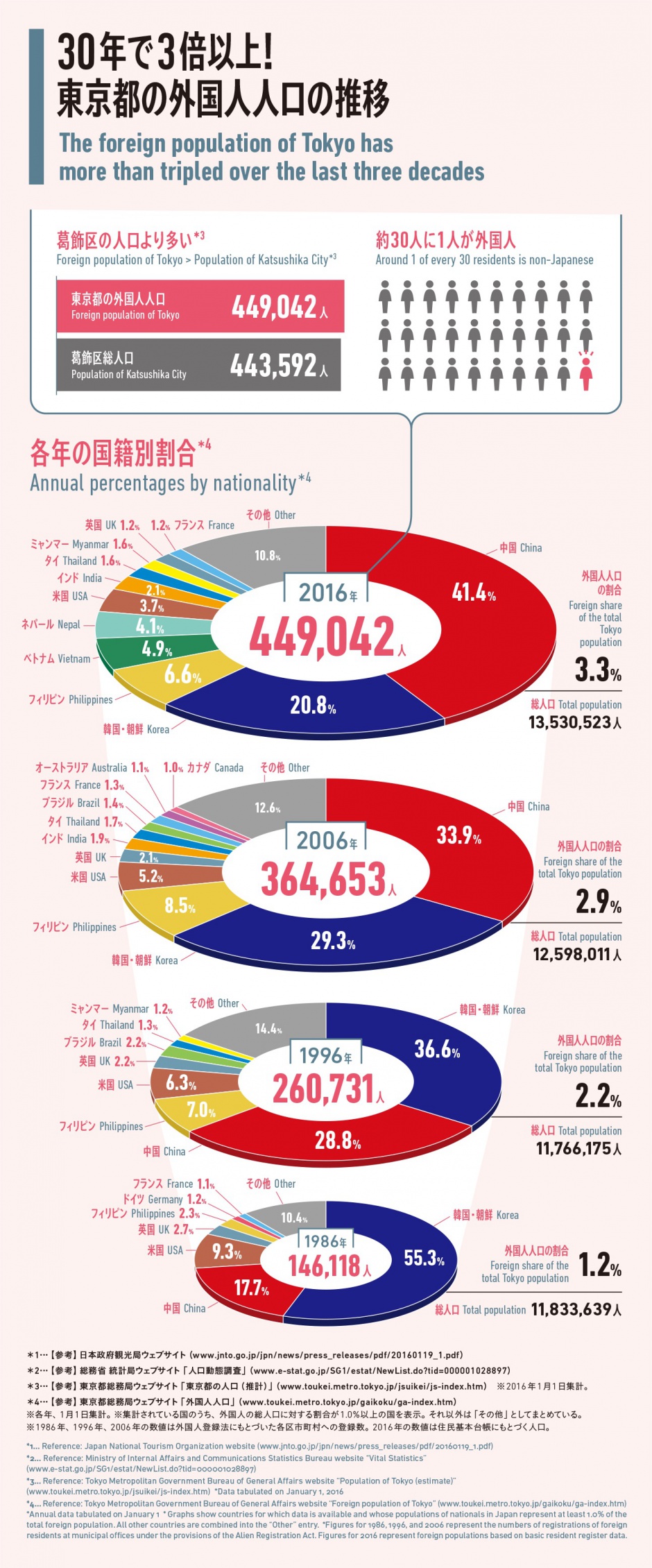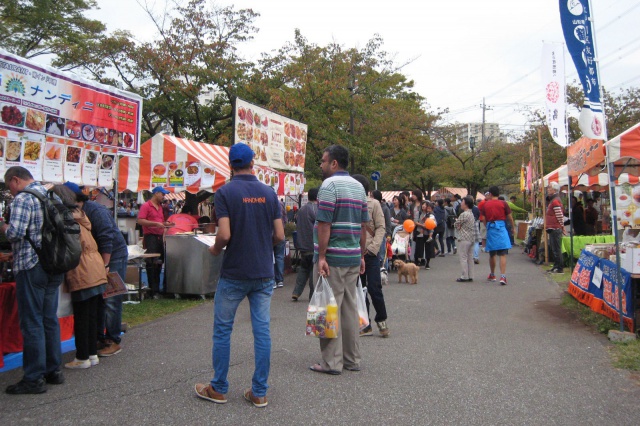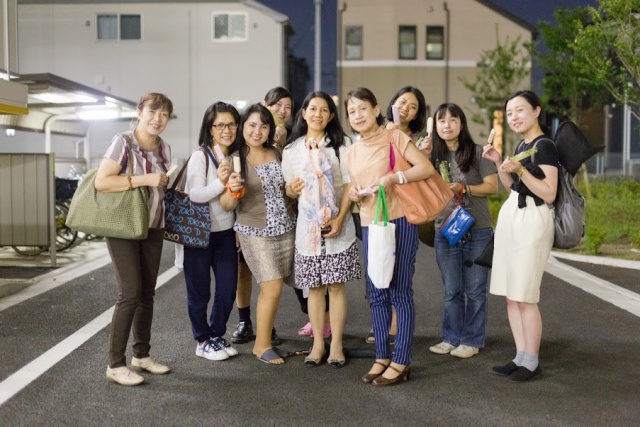vol.
015
DECEMBER
2016
vol.015 / Special
Tokyo Records
Record No. 003: Tokyo’s foreign residents
Tokyo is becoming a destination for more and more foreign nationals every year, and the recent data on travelers to Japan as a whole is impressive. According to the Japan National Tourism Organization, the number of foreign tourists traveling to Japan totaled 19,737,000 in 2015 — a 47.1% increase over the figure for the previous year.*1 For the first time since 1970, a span of 45 years, foreign nationals entering Japan outnumbered Japanese nationals leaving the country. The foreign-resident population of Tokyo, meanwhile, has tripled over the last 30 years. From more than 180 countries and regions around the world, Tokyo’s burgeoning foreign population has the power to transform the city — and the numbers reveal how Tokyo is becoming a more international, interconnected place to live.

1. Countries with only one national living in Tokyo
Countries with only one national living in Tokyo
Monaco
Swaziland
Guinea-Bissau
Bahamas
Saint Lucia
Saint Christopher and Nevis
Grenada
Nauru
Of the more than 180 different countries in the data set for 2016, a total of eight countries had only one national among the Tokyo population — Monaco, Swaziland, Guinea Bissau, and five other nations. One such country was Nauru, a tiny island in the Southwest Pacific with a total land area of just 21.1 square kilometers (only slightly larger than Minato City, which comes in at 20.37 square kilometers) and a total population of around 11,000. It makes you wonder: What brought them here — and what are their lives in Tokyo like?
2. Ethnic communities in Tokyo: Some famous, some less prominent

Image courtesy of the Diwali Festival Nishikasai Executive Committee
Tokyo has its share of famous ethnic areas — Korea Town in Shin-Okubo, for example — and lower-profile communities like enclaves of Burmese residents in Takadanobaba, French nationals in Kagurazaka, and the Chinese population in Ikebukuro. Nishikasai is home to another ethnic community, “Little India,” which formed after Indian IT engineers flocked to Japan to help tackle the Y2K problem and settled in the Nishikasai area for optimal access to the Indian embassy and major business districts like Otemachi. That growing, thriving community has given rise to the Tokyo Diwali Festival at Nishikasai, a yearly celebration of Indian culture.
3. The Japanese Olympic delegation takes on an international identity
Of the 113,194 newborn babies that became part of the Tokyo population in 2015, 3,805 — roughly one of every thirty — has a non-Japanese parent.*2 The sports world is one area where racial diversity is grabbing the spotlight: Track star Asuka Cambridge and judo-ka Mashu Baker both medaled at the Rio de Janeiro Olympic Games, for example, and other athletes like baseball player Rui Okoye are heading up a cavalcade of young superstars with an international heritage. The Tokyo 2020 Olympic and Paralympic Games, now just a few years away, are shaping up to be a showcase for even more athletes with roots across the globe.
4. Multi-national art projects cultivate diversity

Arts Council Tokyo’s various art projects draw participants from a diverse mix of countries and cultures. Art Access Adachi: Downtown Senju – Connecting through Sound Art, for instance, brought foreign residents of the community together with Japanese locals to create the Immigration Museum Tokyo (IMM). Another example of ACT’s emphasis on diversity is the Betweens Passport Initiative, a new project for 2016, which unites foreign residents and Japanese young people in finding ways to involve a broader range of people in the social community.
Reference: Japan National Tourism Organization website
www.jnto.go.jp/jpn/news/press_releases/pdf/20160119_1.pdf
Reference: Ministry of Internal Affairs and Communications Statistics Bureau website “Vital Statistics”
www.e-stat.go.jp/SG1/estat/NewList.do?tid=000001028897
Reference: Tokyo Metropolitan Government Bureau of General Affairs website “Population of Tokyo (estimate)”
www.toukei.metro.tokyo.jp/jsuikei/js-index.htm
*Data tabulated on January 1, 2016
Reference: Tokyo Metropolitan Government Bureau of General Affairs website “Foreign population of Tokyo”
www.toukei.metro.tokyo.jp/gaikoku/ga-index.htm
*Annual data tabulated on January 1
*Graphs show countries for which data is available and whose populations of nationals in Japan represent at least 1.0% of the total foreign population. All other countries are combined into the “Other” entry.
*Figures for 1986, 1996, and 2006 represent the numbers of registrations of foreign residents at municipal offices under the provisions of the Alien Registration Act. Figures for 2016 represent foreign populations based on basic resident register data.
Editing & Written by Playce
Translation: Office Miyazaki, Inc.



